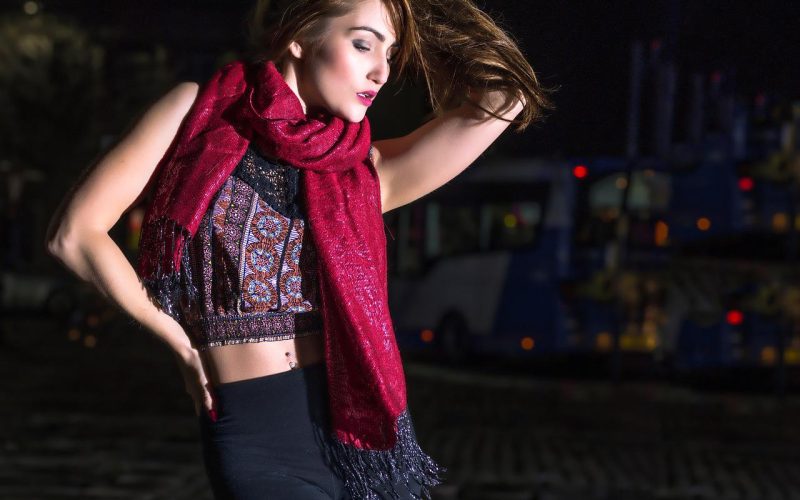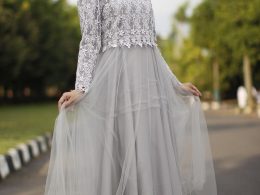In its raw form, street style is about the vibrancy of youth culture. Baggy distressed jeans matched with on-trend jackets and black sandals are rocking the streets, and many people are chiming in on the revived trend.
So how has this style evolved since its mid-century roots? By exploring the developments of street fashion at pivotal points during its cultural rise, we can understand where street style is heading in the future.
Seeking authenticity
Following World War II, the rise of urbanisation and the rapid spread of pop culture engaged many with the idea of an alternative lifestyle. It was a search for authenticity, rebelling against mundane realities and societal expectations.
Street style became an identifiable faciliatory of group cohesion and cultural belonging, liberating many from the constructs they were born into. Fashion became a way to escape this system, becoming bolder and standoffish.
These fashionable subcultures were intrinsically tied to music and art, finding soul in jazz musicians and other performative roles. Throughout the latter half of the 20th century, as music and art evolved, so did street fashion. Adopted by hippies and hip-hop artists, it still represented a collective break from the system.
By the 1990s, the popularity of hip hop brought street style into the limelight. It became pop culture, celebrating baggy fashion and rebellious styles. Its notoriety and popularity continue today, though the way that we celebrate and consume street style is continuously changing.
Identity and self-expression
As street style transformed pop culture, many quickly used the trend to understand their identity and to express themselves.
The new millennium brought this idea onto the red carpet. Hip hop had established its position in society, while its fashion became eclectic. More statement outfits and jewellery consumed magazines and TV stations.
Rappers took a more sophisticated look, wearing designer suits and circulating high-fashion spaces. Meanwhile, street style continued its upwards trajectory. Bomber jackets and loose-fitting trousers were still vital to the style and even made their way onto runway shows, dominating the high street. The next development meant that there was no limit on colour or print, leaving the style open for interpretation and expression.
A style for the modern day
Accessories still play a large role in fulfilling street style’s unique look, as caps and over-body bags are paired with distressed jeans to create versatile and baggy outfits that mirror trends from the ‘90s.
Street style has cemented itself today, using a mix of old and new, borrowing the best items of the past while continually innovating with new, cutting-edge fashion. Collaborations between unlikely brands also bring something fresh to the mix. And with social media, anyone can share their individuality and style online — it’s not just rappers on MTV.
What the autumn 2022 fashion shows presented was a nostalgic celebration of Annie Hall’s androgynous style, which incorporates oversized blazers and trousers matched with boxy coats and chunky boots. Gucci’s creative Director Alessandro Michele said: “Women are really interested in men’s suits.”
Celebrities are also fashioning a plethora of eclectic street style trends. Bella Hadid, for example, was spotted wearing low-rise baggy jeans, a stunning brown leather jacket, red Chanel glasses, and again – chunky shoes.
Street style – where it’s heading
Street style is an amalgamation of past influences that embraces youthful exuberance, unity, and inclusivity. It’s perhaps one of the most popular styles that has passed the test of time and goes beyond fashion. Fashion as an art form is an outlet, so we expect street style to become an even bigger expression of that.
What we’re also witnessing at the moment is a move towards a sustainable future. Many countries, including the UK, have pledged to become net zero by 2050. As fashion is one of the biggest contributors to climate change, more and more fashion brands are adopting sustainable initiatives in their production methods. In that respect, we’re expecting street style fashion to also become sustainable, implementing cutting-edge technology and eco-friendly fabrics.
Street style has always been a celebration of difference and unity at the same time, and its continuation means that followers of the fashion are constantly uncovering and appreciating new cultures, perspectives, and forms of art.
In its raw form, street style is about the vibrancy of youth culture. Baggy distressed jeans matched with on-trend jackets and black sandals are rocking the streets, and many people are chiming in on the revived trend.
So how has this style evolved since its mid-century roots? By exploring the developments of street fashion at pivotal points during its cultural rise, we can understand where street style is heading in the future.









